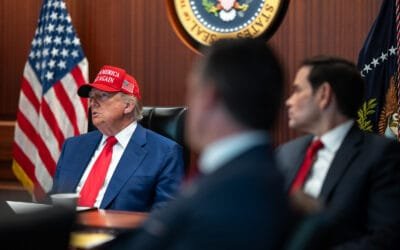I’m going to be on vacation all next week, riding horses on the western slope of the Rockies at the fabulous Home Ranch in Clark, Colorado. No phones. No TV. No Internet. No markets.
So I’ll miss the Federal Reserve’s meeting on June 30. It’ll probably make history by raising interest rates on Wednesday from their lowest level in two generations. But I won’t even find out what they decided to do until I get home next Sunday night, four days after the fact.
Since I won’t be around to take the heat if I’m wrong, it’s time for some not-so-heroic predictions — about what the Fed will do, what the Fed will say, and how the markets will react to it all.
First, my call is that the Fed raises rates by a quarter of a percentage point, from 1% to 1.25%. There’s nothing heroic about that prediction. Based on trading in fed-funds futures contracts on the Chicago Board of Trade, that’s precisely what the market expects the Fed to do. I’m not going to disagree, because at a time when the Fed knows that all eyes are on it (even more intently than usual), it’s not about to do anything that the market doesn’t expect.
I’ll get to how the market will react in a moment. But first, let’s talk about what the Fed will say in the press release that the Federal Open Market Committee puts out after each meeting to explain its decisions.
Over most of the past year, the FOMC’s usual practice has been to state its “bias” in terms of whether it sees the economy tending toward strength or weakness, and whether it sees price stability tending toward inflation or deflation. At the last meeting on May 4, it declared it was neutral in both departments.
I predict that next Friday the FOMC will subtly shift both of those biases to the positive. I think it will acknowledge that the economy is in a sustainable recovery, and that the risk to price stability is in the direction of inflation, not deflation. At this point the FOMC will have to acknowledge what everyone in the world has been able to plainly see in the statistics for months: the economy is in a strong recovery, and inflation is creeping up. The FOMC will downplay it — otherwise it would have to admit that it has been wrong to take so long to see it — but it’ll do it nonetheless.
Another element of the Fed’s message after the FOMC meeting will be its indication about the length of time that rates will remain at the current, abnormally low levels. At the August 12, 2003, meeting, it said it would maintain low rates “for a considerable period.” At subsequent meetings that commitment has been gradually reneged on, transforming at the Jan. 28 meeting into a promise to be “patient,” and at the last meeting, on May 4, to a promise to raise rates in a “measured” way.
I predict that next week the Fed will repeat its latest version of the promise — to raise rates in a “measured” way. These guys like to move in baby steps, and changing their bias from neutral toward economic strength and inflation risk is about all the innovation they’ll be willing to swallow in one gulp.
So how will the market react? My guess is: not very well. The problem is that no decision the Fed can make will please everyone, so it will end up pleasing no one.
There are lots of people out there who think (mistakenly) that the economic recovery is totally dependent on low interest rates to keep it going. They will see the Fed’s more bullish bias as a hint that “measured” rate hikes aren’t going to be as “measured” as they would like.
Then there are other people (like me) who think (correctly) that interest rates have been too low for too long, and that we face a very significant inflation risk. They will take the Fed’s hints as too timid, and will assume that even a somewhat less-than-measured approach to rate hikes is too little, too late.
Don’t worry — it won’t be a disaster for the stock market. But we’re already flirting with the high end of the trading range the market has been in this whole calendar year. With nobody thinking the Fed did the right thing, chances are that after the meeting we’ll spend a little while back in the middle or near the bottom of the range.
Bonds, on the other hand, will react very badly to next Wednesday’s announcement. Bond prices are determined by almost nothing but the combination of expectations for where the Fed will set short-term rates and expectations of future inflation. And the Fed action I predict is bad for both: rates rising more rapidly than expected, and inflation being addressed less aggressively than required.
One thing you have to realize about the bond market is that it has been totally betrayed by Alan Greenspan and the Fed over the past year. Since the FOMC meeting of May 16, 2003, when the Fed first announced its bias toward deflation risk rather than inflation risk, the bond market has behaved in utterly the opposite way than it should have if deflation were really a risk.
In a deflationary environment, bond yields are supposed to fall and bond prices are supposed to rise. Yet the yield of the benchmark 10-year Treasury bond is 89 basis points higher today than it was on the day of that meeting, and the price of that bond is about 6% lower.
If you were a bond investor who believed the Fed’s forecast, you lost your shirt. And the same thing is true for all the other FOMC meeting dates since then. The more the Fed has worried about deflation, the less of a problem it’s been. And the more money bond investors have lost.
So it won’t surprise me if bond investors — once burned and twice shy — get a little skittish about the mixed messages that I predict will come out of the June 30 FOMC announcement.
Here’s what I’m doing about it in my personal trading account. I’m holding on to all my equity positions, but I’m not adding to them right now. I’m going to wait until stocks trade lower within the year’s trading range.
And I’ve sold all my Treasury bonds. Every penny. I’m hanging on to my investment in high-yield corporate bonds, because they’re less sensitive to changes in short-term rates and increases in inflation. But I’ve hedged my junk bonds by buying shares of the Rydex Juno Fund, an unusual mutual fund that is designed to go up when Treasury bonds go down. Effectively, it’s a way of short-selling Treasury bonds without having to deal with all the complexity of actual short-selling.
I’ve made my bets. I’ll see how it all turns out when I get back from the ranch. In the meantime, think of me on my horse. Happy trails!
The above is an “Ahead of the Curve” column published June 25, 2004 on SmartMoney.com, where Luskin is a Contributing Editor.









